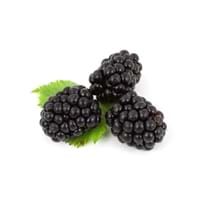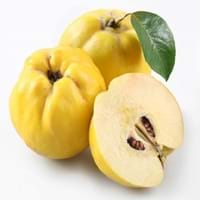Health Benefits
Cancer prevention, Heart care, Increases metabolic rate, Reduces stress, Treatment of dysentary, Treatment of skin Diseases
Cancer prevention, Cures gastro-intestinal troubles, Reduces nervous tension, Ulcer prevention
General Benefits
Digestive aid, Maintains healthy cholesterol level, Strengthens bones
Anti oxidant properties, Anti-inflammatory properties, Boosts immune system, Controls blood pressure, Digestive aid, Eye care, Helps in weight loss, Improves blood circulation, Maintains healthy cholesterol level
Skin Benefits
Hydrates skin, Skin rejuvenation, Skin revitalization
Anti-aging benefits, Reduces wrinkles
Hair Benefits
Promotes longer and healthier hair
Regulates hair growth
Allergy Symptoms
Facial muscle tension, Pressure in sinus, Respiratory congestion, Runny nose, Sneezing, Tingling sensation in wrist and face
NA
Side Effects
Nausea, Vomiting, Might cause change of urine color
Allergic reaction
Best Time to Eat
Best if taken as a breakfast (or empty stomach), As a snack in the late afternoon, Don't consume at night and before bed, Eat the fresh ones, avoid mixing with any other foods, don't eat after meal., Morning time (before lunch)
As a snack in the late afternoon, Don't consume at night and before bed, Eat the fresh ones, avoid mixing with any other foods, don't eat after meal., Morning time (before lunch)
Vitamin B5 (Pantothenic Acid)
Vitamin C (Ascorbic Acid)
Vitamin E (Tocopherole)
Not Available
Vitamin K (Phyllochinone)
Not Available
Lutein+Zeaxanthin
Not Available
Calories in Fresh Fruit with Peel
Calories in Fresh Fruit without Peel
Not Available
Not Available
Calories in Frozen Form
Not Available
Calories in Canned Form
Not Available
Calories in Pie
Not Available
Season
Spring, Summer
Winter
Varieties
Prime Ark, Prime Jim, Illini Hardy, Kiowa, Shawnee, Apache, Arapaho, Chester, Hull, Natchez, Navaho and Triple Crown and Von
Meech’s Prolific, Lusitanica, Champion and Vranja AGM
Color
Purplish black
Green, Yellow
Inside Color
Magenta
White
Origin
Asia, Europe, North America, South America
Iran, South-West Asia, Turkey
Soil Type
Well-drained
Loam, Well-drained
Climatic Conditions
Dry, Warm to hot climate
Warm
Facts about
- There are around 2000 varieties of blackberries throughout the world.
- 80-85 degrees is the ideal temperature for its production.
- Leaves of blackberry tree are used to treat sore throats and mild inflammation of the gums.
- Due to its strong & fruity aroma, brides consumed quince to ensure "perfumed lips".
- It is also called as ‘Pear of Cydonia’, being native to Caucasus and Iran.
- They call it as the ‘golden apple’ of Greek Mythology.
Top Producer
United States of America
Turkey
Other Countries
China, New Zealand, Serbia, South Africa
Algeria, Argentina, Azerbaijan, China, Iran, Morocco, Serbia, Spain, Uzbekistan
Top Importer
United States of America
United States of America
Top Exporter
Mexico
Argentina
Botanical Name
Rubus Fruticosus
Cydonia oblonga
Synonym
Rubus Millspaughii or Rubus Laciniatus
C. vulgaris
Subkingdom
Tracheobionta
Tracheobionta
Division
Magnoliophyta
Magnoliophyta
Class
Magnoliopsida
Magnoliopsida
Species
Rubus fruticosus
C. oblonga
Difference Between Blackberry and Quince
We might think that Blackberry and Quince are similar with respect to nutritional value and health benefits. But the nutrient content of both fruits is different. Blackberry and Quince Facts such as their taste, shape, color, and size are also distinct. The difference between Blackberry and Quince is explained here.
The amount of calories in 100 gm of fresh Blackberry and Quince with peel is 43.00 kcal and 57.00 kcal and the amount of calories without peel is Not Available and Not Available respectively. Thus, Blackberry and Quince belong to and category.These fruits might or might not differ with respect to their scientific classification. The order of Blackberry and Quince is Rosales and Rosales respectively. Blackberry belongs to Rosaceae family and Quince belongs to Rosaceae family. Blackberry belongs to Rubus genus of Rubus fruticosus species and Quince belongs to Cydonia genus of C. oblonga species. Beings plants, both fruits belong to Plantae Kingdom.









